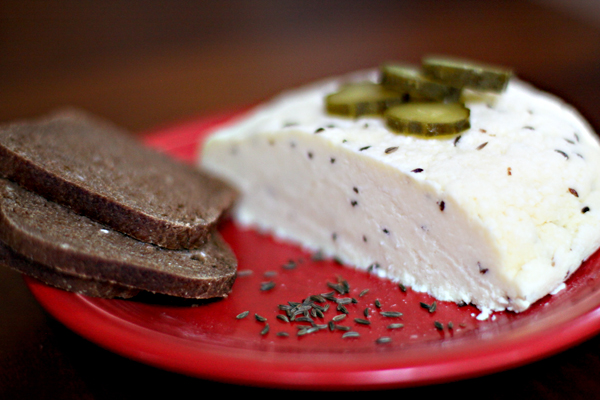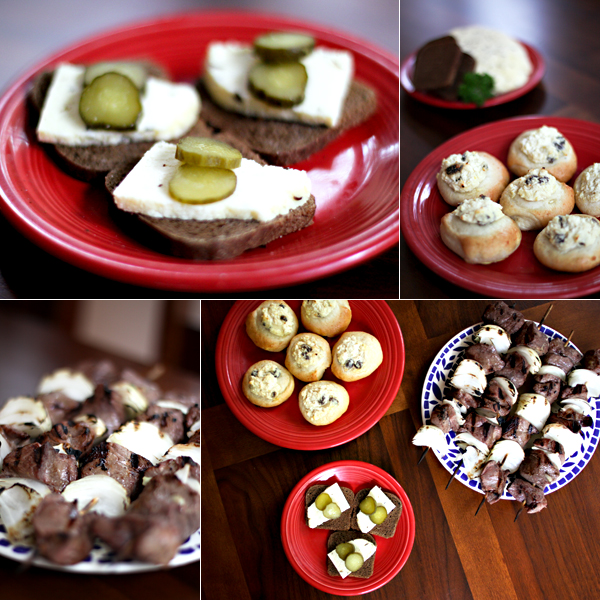
Here’s what I wish I were doing tonight: Packing up the car and heading for the woods, where a bonfire would burn and great piles of grilled sausages would be passed around, washed down with beer, and perhaps sweated out in a dizzyingly hot sauna. (And, it must be said, waking up tomorrow morning smelling of smoke, with twigs in my hair, a dull ache behind my eyes, and a fervent wish that someone somewhere in my vicinity were scrambling eggs.)
Today is Midsummer or St. John’s Day — Juhannus in Finnish, Jaanipaev in Estonian, Jani in Latvian, Jonines in Lithuanian — and probably the most beloved holiday on the calendar.
Much like the summer Friday afternoon exodus from the Twin Cities, on June 24 the capitals of the Baltics empty out. Everybody has a family house in the country — or a friend’s or a friend of a friend’s — where they can gather around a bonfire, eat and drink themselves silly, and enjoy the silvery midnight of not-quite-white nights. In Estonia, not-so-sober revelers will attempt to jump over the fire for good luck. And in Latvia, girls will weave wreaths of flowers to wear on their heads and great rounds of young oak branches for their beaus.
And, throughout the region, much attention will be paid to what to serve and eat: The leading Estonian newspaper reports that sales of meat and beer have doubled in the week leading up to Jaanipaev, bolstered by a forecast of good weather. And I’m sure the story isn’t much different up and down the Baltic coast.
You’d think, with our considerable Finnish heritage here in Minnesota — and surprisingly large and active Latvian population — I’d be able to find some sort of St. John ‘s Day celebration, at least a bonfire somewhere or a sale on sausages at Kramarczuk’s. Instead, however, I’ll be setting up the firepit in the backyard, letting the kids stay up later than they should, and trying to recreate recipes from Estonia, where I spent several years in my early 20s, with American ingredients.

On the menu is shashlyk, lamb kebabs marinated with lemon and onion. Pork would be most common in the Baltics, and beef would work, too, of course. But I’m going with lamb, which seems to bound right out of the sweet green spring fields for no other purpose than to be cooked over an open fire.
(On a recent online discussion of Jaanipaev menus, one commenter sniffily pointed out that shashlyk is not to be counted among Estonia’s traditional foods. Well, indeed, the tasty skewers may have made their way to Estonia from Georgia, Armenia, and the Caucasus via Soviet Russia, but I know from experience there will be great heaps of marinated pork and lamb crackling over fires throughout the Estonian countryside tonight.)
Sausages, large roasts, and chops would also be appropriate. But, if it’s Midsummer, there must be fire and there must be meat. Last Midsummer, to fulfill the meat requirement, my Latvian neighbor (everyone should have one of those) brought over sausage rolls — minced bacon and sausage wrapped in thumb-sized packages of a sweetish raised dough. Perfect.
While there are no cucumbers, tomatoes, or radishes yet ready to be harvested from country-house gardens in the Baltics, we do have them here now. So a nice accompaniment to all that grilled meat would be a traditional cucumber salad: Slice them paper thin, sprinkle with salt, and allow to drain in a colander for half an hour or so; pat dry and toss with a dressing of vinegar and sugar. Or cut tomatoes and radishes into wedges and drizzle with sour cream.
Potatoes are beloved in the Baltics and new potatoes especially so. The first ones — smaller than golf balls, with sweet flesh and tissue-thin skin you would never bother to peel — are usually available right around Midsummer. All these want is to be boiled with salt and tossed with butter and dill. Last year’s potatoes are often grated and baked in a simple, sliceable casserole for eating around the bonfire.

As this is typically an all-night affair, other munchies are necessary. Small open-faced sandwiches on good rye bread are perfect for this: Spread with farmer’s cheese (a fresh white cheese; Lifeway is a good brand and available at Lunds and Byerly’s, as well as Kramarczuk’s and Russian grocery stores) and arrange slices of pickles or cucumber on top. An even richer and tastier topping is egg butter, which is just what it sounds like: Mix roughly equal volumes of chopped hard-boiled eggs and good butter at room temperature, adding salt and maybe dill to taste.
The ultimate once-a-year treat in Latvia is janu siers — St. John’s cheese — a mild semi-hard homemade cheese spiked with caraway seeds. Estonians in the southern part of the country make this as well, and this year I thought I’d try to make it on my own for the first time. I’ve got homemade yogurt down pat and I’m not afraid of ricotta, paneer, cream cheese, or other forms of curdled and cultured milk, so I set out with a fair bit of confidence. I curdled the milk with farmer’s cheese (dry curd cottage cheese works, too). I drained off the whey and heated the curds with butter and beaten egg. Then I stirred and I stirred and I stirred until finally I had to cry uncle: There was no way that grainy mess was ever going to form a ball or get stretchy. We are not, I decided, in the Baltics after all.
But it is Midsummer. It is Jaanipaev, Juhannus, Jani, Jonines, and I am going out to grill some meat. This year, however, I think I’ll skip the hangover.
Shashlyk
Adapted from Nothing Beets Borscht, by Jane Blanksteen, Atheneum, 1974
1-2 onions, sliced very thinly
Juice of two large onions
¼ c olive oil
1 tbsp salt
freshly ground black pepper, to taste
2 lb leg or shoulder of lamb, cut into 1- to 2-inch cubes
Mix everything together in a large bowl, cover and refrigerate at least three hours. Thread cubes of meat onto skewers. Broil 5-7 minutes a side on a very hot gas grill, or about four inches away from flames on a charcoal grill.

Kohupiimakorbid (Estonian farmer cheese pastries)
Adapted from www.nami-nami.ee
These rich, but not too sweet pastries are somewhere between a dessert and a snack. The final pastries should look like baskets (as the name implies) with a sweetened cheese filling.
Dough
1 ½ c milk
1 packet dry yeast (2 ¼ tsp)
¼ c sugar
1 egg
pinch of cardamom
5 c white flour
4 tbsp butter, softened
1 tsp salt
Filling
9 oz soft farmer cheese (250 g, a standard package size)
1 egg
2 tbsp sour cream
⅕ tsp vanilla
zest of one lemon
¼ c raisins
One egg, beaten with a little water, for egg wash
Heat milk to just above room temperature (105 degrees). In a large bowl, mix this with yeast, sugar, egg, and cardamom. Add half of flour and mix well. With your hands or a stand mixer, mix in remaining flour, butter, and salt. Knead until you have a soft, elastic dough. Let rise until doubled in size. Meanwhile, mix all the ingredients for the filling, blending well.
Divide dough into 24 pieces and form small, smooth balls. Place these, well spaced, on a two baking sheets covered with parchment paper. Let dough balls rest about 20 minutes, then press down with the bottom of a glass with a slightly smaller diameter. Fill each depression with about two tablespoons of filling. Brush the edges with egg wash. Bake in a 400-degree oven about 20 minutes, until golden brown.
Janu siers / soir (St. John’s Day cheese)
From Puhade- ja tavanditoidud, by Silvia Kalvik, Maalehe Raamat
As I said, this didn’t work for me. But it works for my Latvian neighbor, and for thousands of Estonian and Latvian grandmothers. Do let me know if you find success.
1 lb soft farmer’s cheese (or dry curd cottage cheese)
1 qt milk
3 tbsp butter
2 eggs
1 tsp salt
1-2 tsp caraway seeds
Press the farmer’s cheese or cottage cheese through a sieve or give it a few seconds in the food processor so it’s relatively smooth. Heat the milk to boiling, lower the heat, and add the farmer’s cheese. Stir constantly, until the curd separates from the whey. (You’ll see white bits floating in a greenish translucent liquid.) Pour through a colander lined with cheesecloth to drain off the whey. (Squeeze out the excess liquid or let it drain for a good half hour or so.) Melt the butter in a heavy-bottomed saucepan, add the curds and stir constantly over medium heat until it all comes together in a ball. Beat the eggs lightly with the salt and caraway seeds and add this very gradually to the cheese mixture, stirring constantly. Keep stirring until you get a stretchy, cheese-like mass. The more stirring, the better. Pat the cheese into a glass bowl or other mold and put it in the refrigerator to set.


Kavorka? It is a Latvian word which means “the lure of the animal”